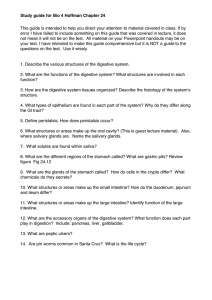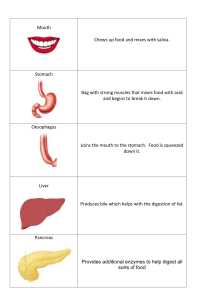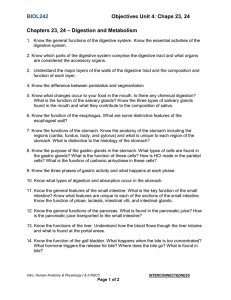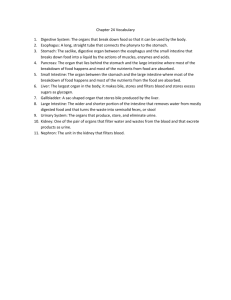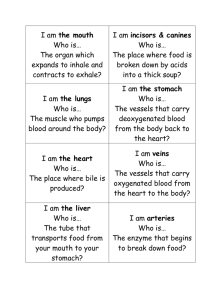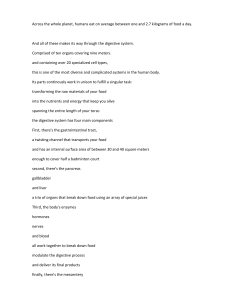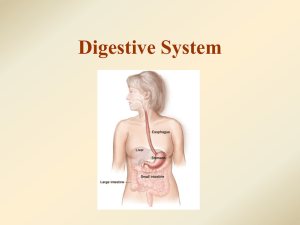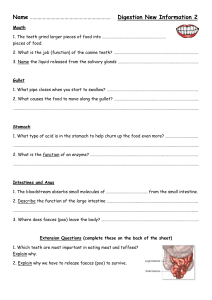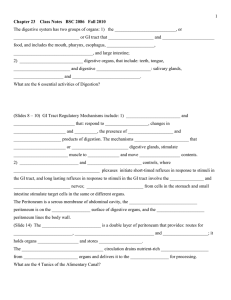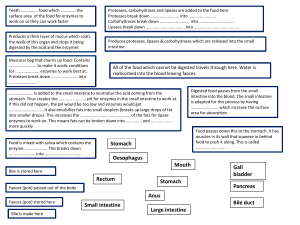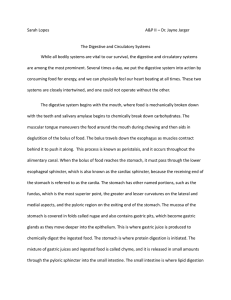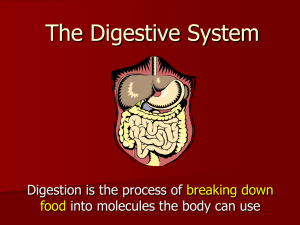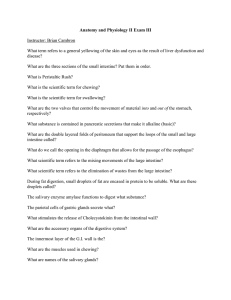3 ESO Digestive
advertisement
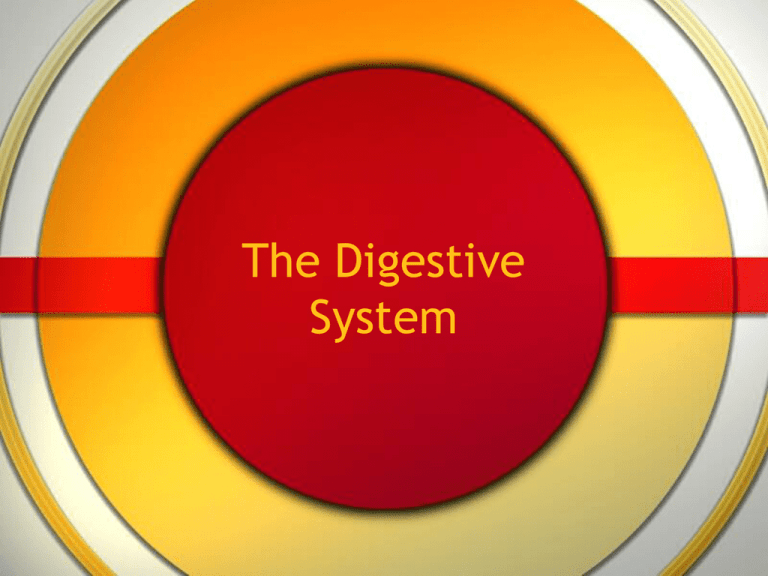
The Digestive System Digestive System • Group of organs that break down food. • This system is made up of the digestive tract and a series of accessory glands. Phase 1- Eating/Swallowing Step 1 • Food is inserted into the mouth and broken down into pieces through the mechanical process of mastication. • We use our tongue and teeth to move our food and chew. Step 2: Saliva • Insalivation: creation of saliva by the salivary glands in the mouth to help swallow and break down the food in the body. Step 3: Swallow • Swallowing of the food bolus takes place because of the movements of the tongue, pharynx and oesophagus. Food bolus: soft mass of chewed food Phase 2: Internal processing by different organs • After food is swallowed it travels down the oesophagus and into the stomach. • Now, all the organs work together to process the food in the body. Step 1: Stomach • In the stomach glands secrete gastric juices that mix with with the food. This mixture is called chyme. Step 2: Liver & Gal Bladder • When the food enters the small intestine the liver produces bile, which is stored in the gal bladder. • The bile contains bile salts that help to digest fats. Step 3: Pancreas • The pancreas gland produces hormones to regulate glucose and secretes pancreatic juice. • Pancreatic juice contains enzymes to digest foods. Step 4: Small Intestine • In the small intestine nutrients from the food are absorbed. These include: • Monosaccharides • Fatty acids • Glycerol • Amino acids • Vitamins • Mineral salts Step 5: Large Intestine • The large intestine absorbs water and then compacts the waste products in to faeces. • The faeces are then expelled from the body via the anus. Review • All of these steps combined keep our bodies happy and healthy.

